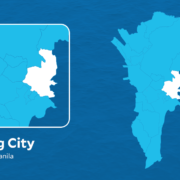Balut, penoy, abnoy

Growing up, when I saw balut and penoy on the kitchen table, I knew that my mother’s relatives from Pateros had come to visit. Balut and penoy are cooked fertilized duck eggs, the former has a partially developed embryo or “sisiw,” the latter had no embryo. Browsing through H. Otley Beyer’s prewar “Philippine Ethnographic Papers,” I was drawn to the research paper of Ramon Aviles on “The Balot Industry of Pateros.” Submitted as a requirement to pass Anthropology I at the University of the Philippines in October 1916, the century-old data may be obsolete as ethnography, but it remains useful as history. From this paper, I learned that it took about 90 minutes to get from Manila to Pateros. First, you took an electric car or tranvia from Manila to Fort McKinley (now BGC), then you transferred to a banca along the banks of the Pasig River that ferried you to Pateros. A faster way, without transfers, would be to travel from a dock in Escolta or Fort Santiago and make your way to Pateros via the Pasig River; that was what Edsa is to Metro Manila today minus the traffic. “Meralco” originated not just as a power distributor, but a transport company, too. Meralco used to mean the Manila Electric Railroad and Light Company.
Aviles reported that Pateros used to be a densely populated town until people migrated to Manila in search of work. Major industries used to be betel vine cultivation, chinelas manufacturing, and duck raising. Aviles said that Pateros used to be planted with betel vine, cultivated mainly for the leaves that were exported to places where betel chewing was practiced. Betel leaf was used to wrap the “bunga” (areca nut) and lime for chewing. This had a slight narcotic effect that made users giddy, talkative, and happy. Unfortunately, the Americans discouraged betel chewing to clean the streets off betel nut spit. A younger generation was weaned from it aesthetically because it stained the teeth and gums blood red. Americanized Pinoys then shifted from betel to cigarettes. The Pateros chinelas industry also declined when daily footwear preferences shifted from chinelas to shoes.
With the decline of betel vine cultivation and chinelas making, the itik industry became the dominant industry that made Pateros synonymous with balut and penoy. Then there was the racy prewar tune, “Balut, penoy, balut!” popularized by Katy de la Cruz’s raspy-voiced scat. Its relevant lyrics describe the duck eggs as: “mainam na gamot sa mga taong laging nanlalambot (cure for weakness),” “pampalipas ng pagod at mabisang pampalakas ng tuhod (relieves fatigue and strengthens the knees).” Balut is believed to be an aphrodisiac, so the knee strengthening alluded to is not for walking.
The balut industry described by Aviles in 1916 was not new. One of the earliest references on the itik raising there dates from 1875, in “Recollections of a voyage to the Philippines,” by the Belgian traveler J. de Man. He describes the duck industry in Pateros, adding that men (not women) sat carefully on the baskets of duck eggs to hasten fertilization or did he mean hatching?
Aviles described the itik that were housed in a “puya” (roofed structure on the riverbanks) and fed a diet of palay (rice) and “kuhol” (river snail). He said that when the rivers dried up and kuhol became scarce, some of the itik entrepreneurs moved to Laguna, and maybe that’s why the best “linulob na itik” is sourced from the lakeshore towns. After eating this fried at home, with a dip of banana ketchup and Worcestershire sauce, I realized that a fried itik is a waste, and that raising itik for eggs was economically better. My mother preferred duck eggs for leche flan and duck eggs for itlog na maalat (gooey yolk salted eggs). While chicken or any eggs from fowl can be made, in principle, into balut, only duck eggs are used Aviles remarked that balut was, “greatly appreciated by the Tagalogs, but foreigners seem to have little or no taste for them.”
The first step in the process is egg selection made by experts who held eggs to a candle in a darkened room and separated the fresh eggs. Then, the thickness of the shell was tested by tipping the egg lightly against the expert’s front teeth. Only fresh, large, wild duck eggs with a thick shell are made into balut. These are first exposed to sunlight then transferred to “tigbos” (coarse abaca cloth) in batches of 25 to 50 eggs per bundle, hence the name “balot” (to wrap). Discarded rice husk, “ipa,” was then heated in a “cawa” and transferred to line the bottom of a basket where the “tigbo” rested, covered by another batch of heated “ipa,” and topped by another tigbo and so on. Fifteen days later you have balut. Finally, the balut is classified into “higupin” an odorless watery yolk and “penoy” putrefied stinky eggs. Today, nothing is wasted. What used to be thrown away as “bugok” is now “bugok na may pakinabang” or “abnoy” that is recycled into “tokneneng” when rolled into a batter and deep fried or “bibingkang abnoy.”
Ethnography noon (before), history ngayon (now).
—————-
Comments are welcome at aocampo@ateneo.edu
Ambeth is a Public Historian whose research covers 19th century Philippines: its art, culture, and the people who figure in the birth of the nation. Professor and former Chair, Department of History, Ateneo de Manila University, he writes a widely-read editorial page column for the Philippine Daily Inquirer, and has published over 30 books—the most recent being: Martial Law: Looking Back 15 (Anvil, 2021) and Yaman: History and Heritage in Philippine Money (Bangko Sentral ng Pilipinas, 2021).


















Asia: From democracy’s hope to repression’s leader